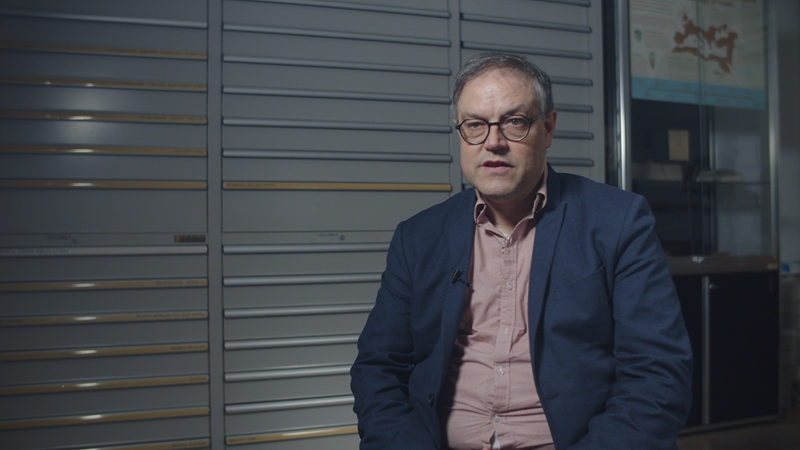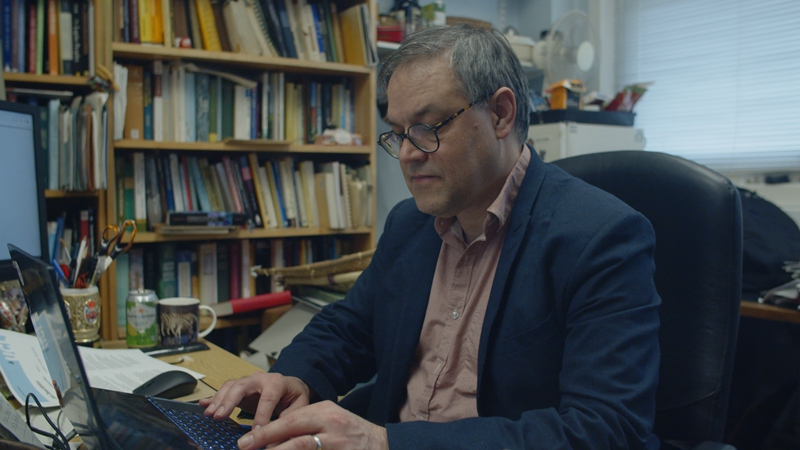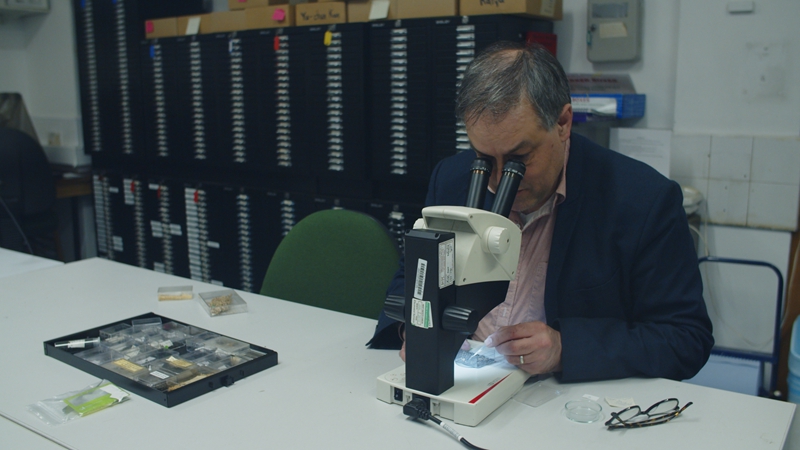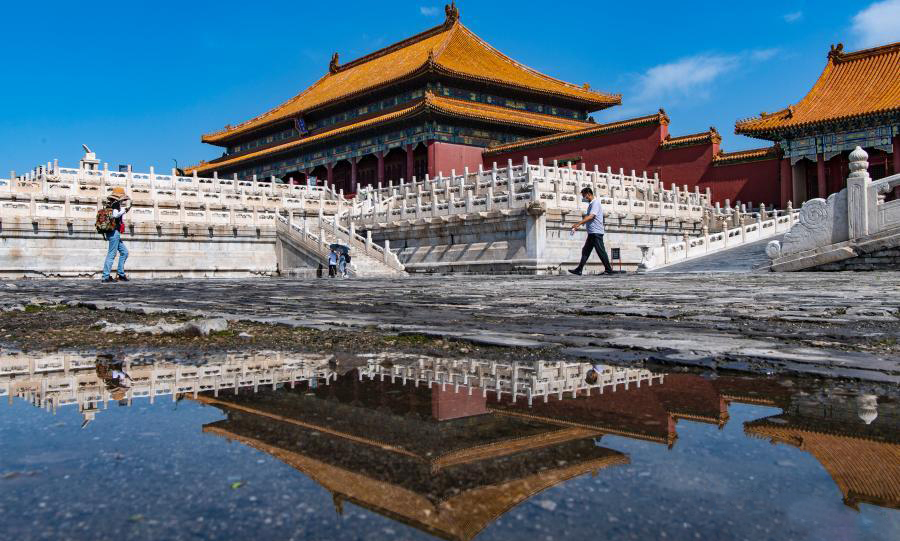Dorian Fuller: Chasing the first grains of China
Dorian Fuller is a professor of archaeobotany at University College London. He has published extensively on topics related to past subsistence societies, the origins and evolution of agriculture and the process of plant domestication.
Professor Fuller’s fieldwork projects have spanned the Eurasian and African continents to encompass over a dozen countries and focus primarily on the systematic sampling of archaeobotanical evidence, many of which have contributed directly to filling major gaps in our knowledge on past agricultural practices in specific regions. Published in 2009, his work focused on the site of Tianluoshan in Zhejiang Province is renowned for capturing the early historical process for rice domestication and cultivation starting from as early as 6,900 years ago.
As an early proponent of the UCL-PKU International Centre for Chinese Heritage and Archaeology and the UCL-NWU Silk Roads Research Centre, Professor Fuller has trained generations of Chinese students and scholars and has helped to design the Master of Arts programme in the Archaeology and Heritage of Asia.

Dorian Fuller (Photo/Fraser Watson)
The story behind every project
People’s Daily Online: You have studied plant remains across Eurasia and Africa since your early days as a graduate student. When was your first contact with China?
Fuller: I started teaching here at UCL in the year 2000. Shortly after that, in 2001, I was invited to be part of a small delegation from this institute to travel to China to give a series of lectures at Peking University, including our then head of the institute, Peter Ucko. I gave a series of three lectures at Peking University on the origins of agriculture in Western Asia, in North America and in India.
At that time, I was trying to learn what I could about it in all parts of the world, including China. But the material that was available to me in English at that time was limited. One of my real highlights of that trip was at one of the dinners I had the chance to meet Professor Yan Wenming, and I had a chance to really have a conversation with him, asking him lots of questions about Chinese Neolithic, early agriculture, and early livestock in China. I really learnt a lot from that, and I came away with a strong interest in wanting to learn more.
People’s Daily Online: Did you get an opportunity to do more fieldwork in China after your 2001 trip? Could you share with us some of your findings?
Fuller: After our 2001 trip, the UCL Institute of Archaeology established a joint centre with Peking University, the International Centre for Chinese Heritage and Archaeology in 2004. One of the aims was to increase international communication, training, and research collaboration between archaeologists in Britain and China. The idea behind that centre is to create an infrastructure so that we can share theoretical ideas and developments that are happening here with our Chinese colleagues and incorporate them into our teaching and research.
Supported by the new centre, I was able to go to China in October, November 2004, and join for a few weeks the training excavation of Peking University at a site called Baligang in southern Hunan Province. And one of the PhD students on that dig, a man named Zhang Hai, who's now a professor at Peking University, was inspired to go out and do some archaeobotanical sampling on other sites in Henan. He then asked if I would analyse those data, and we published it together in a report in 2007.
I was also able to see the new excavations at a site called Tianluoshan in Zhejiang Province. And the preservation and the quantity of plant remains from that site was extraordinary. I then went back to that site a couple of times in 2006 and 2007, and it became clear that we were not just looking at early rice agriculture, but rice as it was evolving from its wild form to what we might consider as domesticated rice today. We were picking up a key stage in the creation of rice as a crop and we ultimately published some of those data in the journal Science.
People’s Daily Online: Much of your work seems to have been concentrated in the domestication of staple crops in the Central Plains or the Lower Yangtze River. Is there any other topic or area that you wish to explore?
Fuller: Yes, so a lot of our active technical research has focused essentially on central China in the Yellow River Basin and the Yangtze River Basin. But we still know much less about green vegetables and leafy crops or tuber crops, things that are grown for their roots. And studying them will be very important for filling out that story for both the culinary diversity within central China, but also for improving our understanding of some regions like southern China.
One of the regions of China that I'm most interested in pursuing further research in and I'm very fascinated by is in the southwest, particularly Yunnan Province and maybe some of the adjacent provinces. And the reason for that is, ecologically speaking and culturally speaking, it’s a crossroad of Asia. In terms of the biogeography of the species there. It's one of the most diverse floors in the world regionally. And that's because it's at this juncture between the temperate zone and the tropical zone, between the Tibetan Plateau and the lowlands. You have the juncture of vegetative crops like tubers, like yams and taro; you have, of course, the cereal crops, rice and millet that are coming out of China; but you also have crops that have come from India. That’s why I think there's a lot of fascinating interaction and cultural diversity in that region.
There is a lot of fascinating interaction and cultural diversity in the region and the traditional systems of land use we see there can be very important in conserving landscapes and biodiversity.

Dorian Fuller (Photo/Fraser Watson)
To see each plant as a research project in itself
People’s Daily Online: You have contributed greatly to the growth of archaeobotanical research in China and other parts of the world. What do you think is special about Chinese archaeology?
Fuller: There are certain things about the style of archaeology and excavations in China that are quite unique. One of those is that it's very much rooted in the local. At least some of the excavations are normally from a local provincial institute. So, they are very much rooted in routinely studying the local past of this place.
There's a lot of material to analyse there, and it's extremely exciting from an analytical point of view. I think it is important that the archaeology is rooted in place so that excavations are aimed to understand how people lived in a particular landscape rather than being driven by a research question, as is sometimes the case in other parts of the world.
The other thing that's important is scale. In recent decades, Western excavations have tended to become much smaller in scale. And big excavations in the 1950s, for example, would not have carried out systematic scientific sampling of the sort that we would carry out today. The growth of large-scale excavations in China in recent decades has accompanied the development of archaeological science, so systematic sampling and scientific approaches have been parts of that scaling up in archaeology. Therefore, it's very exciting in that there's huge amounts of high-quality data coming out of these projects.
People’s Daily Online: No matter how busy you have been, you always found time to teach in the classroom and give lectures around the world. Could you share with us some of your teaching experience?
Fuller: Of course, a major part of my job as a professor is to teach students and to train the next generation of archaeologists, and to encourage new approaches and new ways of thinking. Since 2012, I think we have had a master's degree called the Archaeology and Heritage of Asia, which I helped to design, which includes Central Asia, China, South Asia, and Southeast Asia. And the idea is to encourage the study of archaeology and the comparison of archaeology in those different regions. The students will look at Indian archaeology and Chinese archaeology and Silk Road archaeology and think about the potential for comparisons, contrasts and research that may be harder to do at an individual country level. I've also taught as a guest lecturer at Peking University, Shandong University, Sichuan University and Northwest University.
And one of the things that I was very pleased to do was to give lectures for an entire course on archaeobotany at PKU in 2008. And it was both a lecture course and a practical course in archaeobotany, after which the university invested in buying microscopes and setting up space and facilities to carry out future archaeobotanical research.
It's very satisfying to see the growth in this field over the years and to have been able to contribute to that.

Dorian Fuller (Photo/Fraser Watson)
People’s Daily Online: In general, what do you consider to be the biggest area of interest on the topic of plant domestication?
Fuller: The truth is, botany is all around us. It's in our kitchens and it's in our grocery stores. But don't just say, oh, well, that's a tomato. I'm going to eat it. Think about where does the tomato come from? How's it structured? How would you recognize it? Start archaeologically thinking about each of those plant foods that you eat as a kind of research project in itself.
I think that the origins of agriculture and the domestication of crops is a subject that can appeal to a very wide audience. Almost everybody in the world eats crops that have been grown through agriculture. That’s a story which is almost universally human and it's also comparative.
In Western Asia and the Americas, Africa, India, and of course, in China, the crops that were domesticated in different places were different. And the resulting combinations of foods and foodstuffs and the way cooking developed around them was different in various parts of the world. For instance, in ancient China, we see right from the beginning of agriculture, right from the Neolithic period, an elaboration of cooking techniques focused on boiling and steaming developed. You have steamed or boiled foods such as rice, noodles, dumplings, and baozi that have lasted from the Neolithic period all the way to the present.
That's quite different from what we see in early agricultural societies in Western Asia or Europe. And you can start to think about how these long-term patterns have persisted over a long time and formed the culinary cultures of today.
Photos
Related Stories
Copyright © 2022 People's Daily Online. All Rights Reserved.









